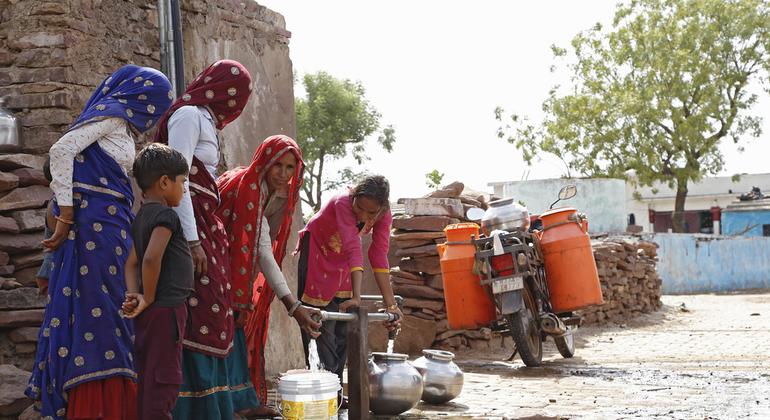Water is the ‘canary in the coal mine’ of climate change: WMO


Current status of global water resources The report released on Monday also highlighted that over the past five years, below-normal river flow conditions have been recorded resulting in less water reaching the reservoirs. Reduced supplies have reduced the amount of water available to communities, agriculture and ecosystems.
According to UN Water, currently, 3.6 billion people worldwide do not have access to enough water for at least one month each year, and this number is expected to increase to more than 5 billion people by 2050.
The report also revealed that glaciers lost the most mass ever recorded in the past five decades. Every region of the world with glaciers is reporting ice loss.
Melting ice has released more than 600 gigatons of water, much of which has flowed into the ocean as well as several rivers.
Meanwhile, 2023 is set to be the hottest year on record, leading to rising temperatures and widespread dryness, contributing to prolonged drought.
Unprecedented tension
“Water is the canary in the coal mine of fighting climate change. We receive signals of distress in the form of increasingly extreme rainfall, floods and droughts that take a heavy toll on lives, ecosystems and economies. WMO Secretary General Celeste Saulo.
The report also paints a clear picture of the world’s freshwater resources, highlighting unprecedented stress, exacerbated by climate change and growing demand.
Climate change is increasing
A significant number of floods around the world are highlighted in the report.
The increase in extreme hydrological events has been influenced by naturally occurring climate conditions, including the transition from La Niña to El Niño weather patterns in mid-2023 as well as climate change consequences caused by humans.
“Due to rising temperatures, the hydrological cycle has accelerated. It also becomes more erratic and unpredictableand we are facing the problem of more or less water,” Ms. Saulo explained.
Africa is beaten
Africa was the worst affected in terms of human casualties. In Libya, two dams failed due to massive flooding in September 2023, killing more than 11,000 people and affecting 22% of the population.
Floods also affected the Horn of Africa, the Democratic Republic of Congo as well as Rwanda, Mozambique and Malawi.
Meanwhile, the Southern United States, Central America, Argentina, Uruguay, Peru and Brazil are affected by widespread drought, leading to the lowest water levels ever observed in the Amazon and Lake Titicaca on the Bolivian border and Peru.
Monitor and share data
“Too little is known about the true state of the world’s freshwater resources. We cannot manage what we cannot measure,” Ms. Saulo said.
“This report aims to contribute to improved cross-border surveillance, data sharing, cooperation and assessment. This is urgently needed,” she added.
WMO said the report aims to improve the accessibility and availability of observational data, through better monitoring and improved data sharing, especially in the Global South.
Early warning
This report aligns with the focus of the United Nations’ global Early Warning for All initiative on addressing water-related challenges.
A global effort to improve data quality and accessibility for monitoring and forecasting water-related risks, with the goal of making Early Warning systems available to all by 2027.
WMO has emphasized the urgent need for action to address water-related challenges, calling for improved monitoring, data sharing and cross-border cooperation to better understand and manage resources global water.



